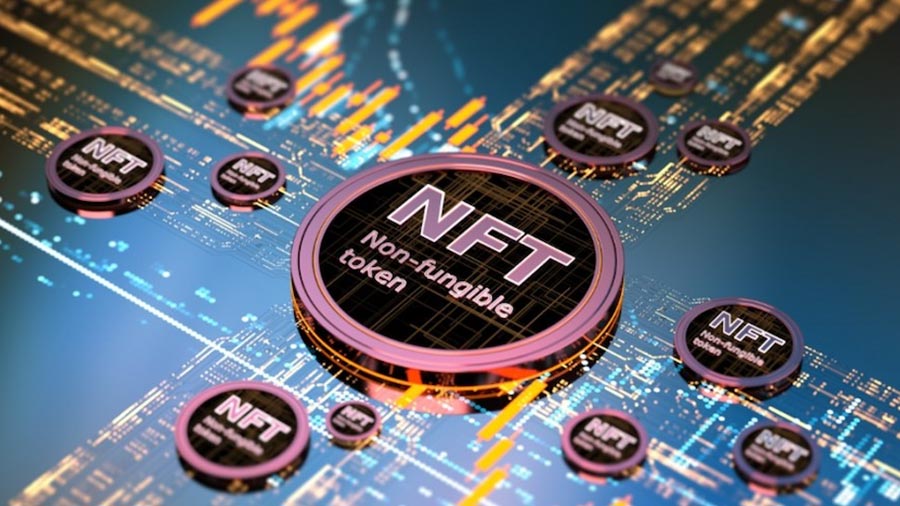In recent years, the rise of digital assets, particularly non-fungible tokens (NFTs), has transformed the landscape of digital ownership and investment. NFTs represent unique digital items on a blockchain, enabling ownership verification and provenance tracking. As the NFT market continues to evolve, understanding its dynamics and potential investment opportunities becomes essential for investors looking to diversify their portfolios. This article explores the economic implications of NFTs, their market behavior, and how they compare to traditional assets like stocks and investment vehicles like MTF (Margin Trading Facilities).
Understanding NFTs: A Brief Overview
NFTs are digital tokens that represent ownership of a unique item or piece of content, such as art, music, videos, or virtual real estate. Unlike cryptocurrencies like Bitcoin or Ethereum, which are fungible and can be exchanged on a one-to-one basis, NFTs are unique and cannot be replicated. This uniqueness and the underlying blockchain technology ensure that each NFT has verifiable ownership, which is a key selling point for collectors and investors alike.
The NFT market exploded in popularity in 2021, with high-profile sales reaching astronomical values. For instance, digital artist Beeple’s artwork sold for $69 million at a Christie’s auction, capturing widespread media attention and sparking interest across various sectors, from entertainment to real estate. This surge in popularity has raised questions about the sustainability of NFT valuations and their role in investment portfolios.
Market Dynamics of NFTs
1. Supply and Demand
The NFT market operates on principles of supply and demand, similar to traditional markets. The rarity and desirability of specific NFTs significantly influence their prices. Limited editions or one-of-a-kind pieces tend to command higher prices due to their perceived value among collectors. Conversely, an oversaturated market with similar offerings can lead to price declines, making demand fluctuations crucial for understanding the market.
2. Speculation and Volatility
Speculation plays a significant role in the NFT market. Many buyers purchase NFTs hoping to resell them for a profit, leading to volatile price movements. This speculative behavior can result in rapid price increases but also steep declines, reflecting investor sentiment rather than intrinsic value. For investors accustomed to the stability of stocks, navigating the NFT market’s volatility can be challenging.
3. Marketplaces and Accessibility
NFT marketplaces, such as OpenSea and Rarible, facilitate buying, selling, and trading NFTs. These platforms have democratized access to digital assets, allowing anyone with an internet connection to participate. However, the ease of access also brings challenges, such as potential fraud and lack of regulation. Investors must conduct due diligence before entering the market, particularly when purchasing high-value NFTs.
Investment Potential of NFTs
1. Diversification Opportunities
For investors looking to diversify their portfolios, NFTs present a new asset class that can complement traditional investments like stocks and bonds. While stocks are typically correlated with economic performance and company fundamentals, NFTs can behave independently, driven by cultural trends and consumer behavior. This diversification can help mitigate risks, particularly during economic downturns when traditional assets may underperform.
2. Long-Term Value vs. Short-Term Gains
Investors in NFTs face the challenge of distinguishing between short-term speculative opportunities and long-term value propositions. While some NFTs may experience immediate price surges due to hype, others may possess lasting value based on artistic merit, utility, or brand association. Conducting thorough research and understanding the underlying factors contributing to an NFT’s value is essential for making informed investment decisions.
3. Integration with Traditional Investment Platforms
As the NFT market matures, traditional investment platforms are beginning to explore ways to integrate digital assets. Some brokerage firms have started to offer NFT trading alongside stocks and other securities. Furthermore, Margin Trading Facilities (MTF) could allow investors to leverage their NFT holdings, potentially enhancing returns but also increasing risks. However, regulatory frameworks surrounding these integrations are still developing, and investors should remain cautious.
Conclusion
The economics of digital assets, particularly NFTs, is a rapidly evolving field with significant implications for investors. As the market continues to mature, understanding the dynamics at play will be crucial for those looking to incorporate NFTs into their investment strategies. While NFTs offer exciting opportunities for diversification and potential long-term value, the risks associated with volatility and speculation cannot be ignored.
Investors familiar with stocks may find the NFT market’s unique characteristics both appealing and challenging. As platforms for trading and investing in digital assets evolve, the integration of NFTs with traditional investment vehicles like MTFs may pave the way for more sophisticated investment strategies. Ultimately, the success of NFTs as a viable investment class will depend on their ability to establish sustained value in an ever-changing economic landscape.
Keep an eye for more latest news & updates on Gossips!




